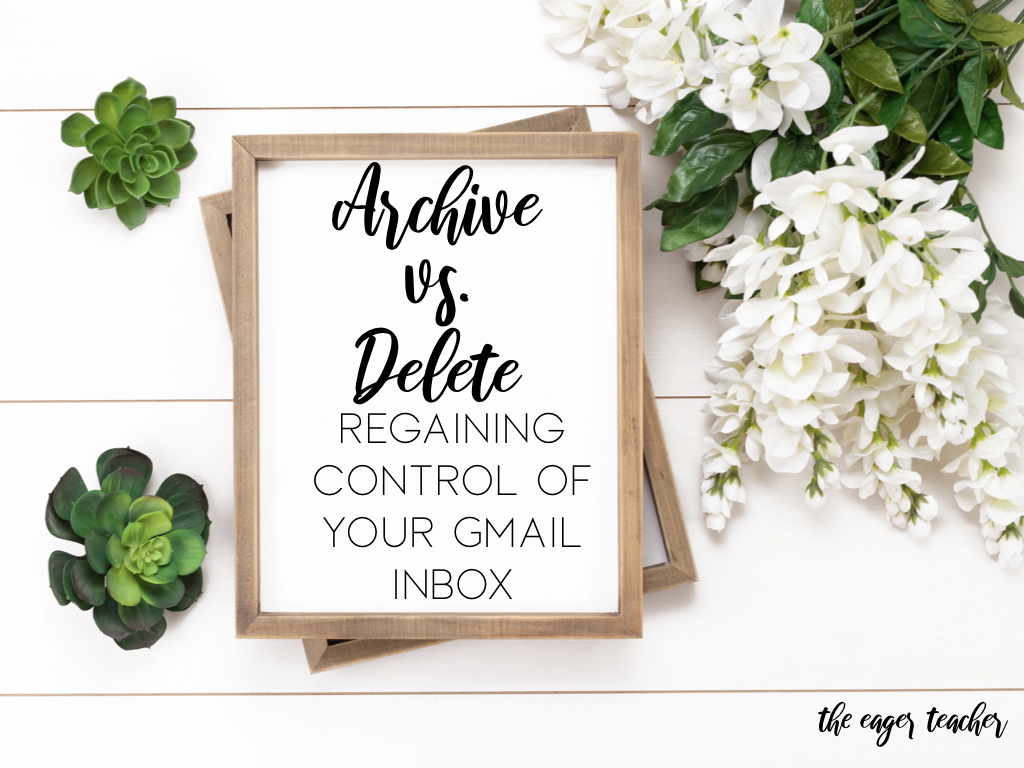It seems like it is getting harder and harder to stay on top of emails in life. Everywhere you go, you are on the hook for more emails. Stores that email receipts, payment confirmations, coupons, sales…so. many. emails. Plus add a full time job into the mix and you most likely drown in emails that you don’t really even need to read but are FYI emails or emails from colleagues asking if anyone has ibuprofen in their desk or letting you know that their daughter is selling Girl Scout Cookies.
It is too much. I used to scratch my head and not understand how people subscribed to the “Inbox Zero” philosophy. It seemed unattainable. This summer at one point I had over 2,000 emails in my work inbox. 2,000! I felt myself on the verge of a nervous breakdown trying to go through each one. Most of them I had responded to (if needed) and I had skimmed most for information, but the thought of trying to decide whether I could delete them, what folder to organize them in, what information might be needed for a future project…I was paralyzed. Then a wise colleague of mine asked me why I don’t just archive them all? If I realize I need to go back and find them I can, but I don’t have to look at them every day. MIND. BLOWN. I decided to dive deeper into this and drastically change my email routines. You can read more about my *most* radical change here.
If you work for a school district who uses Gmail, then Archiving emails is the way to go. Deleted items in Gmail are permanently deleted after 30 days. Archived emails go out of your inbox into the ALL MAIL folder, so you can still search through them if you ever need to. Here are my tips for making the most of Archive.
Turn on the Send + Archive button in Gmail
The send + archive button will archive an email after you reply to it. Part of the problem with inboxes is even if you have replied to an email, it takes time and effort to go back into your inbox and archive the message. Enable send + archive to immediately get rid of emails as soon as you respond. Remember, you can always go back and retrieve it if you need to.


Get Comfortable with the Gmail Search
If you’re a recovering Outlook user, you may feel really uncomfortable relying on a search tool to be able to retrieve old emails. BUT TRUST ME. GMail’s search is so powerful. When you start archiving everything, you will rely on the search to go back and find things because remember, you don’t waste time labeling emails and filing them into little folders anymore. This is email freedom.
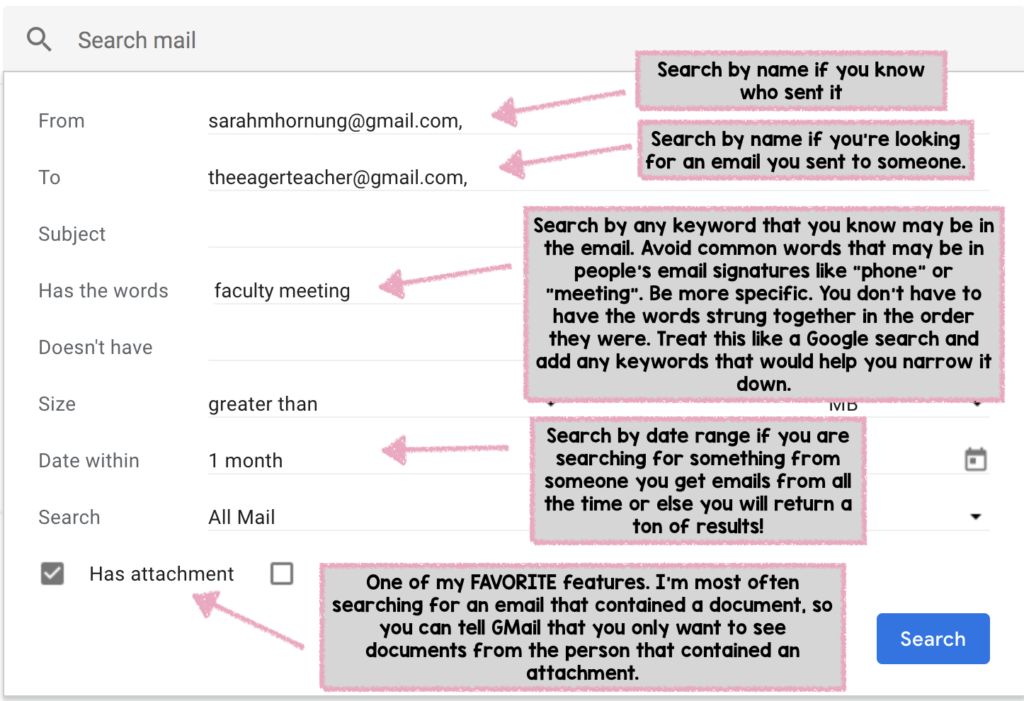
Turn on the Important First inbox type
The Important First inbox will use an algorithm to put emails that are only addressed to you and few other people into the top of your inbox, and “Everything Else” below in a separate email. This makes it much easier to fly through the Everything Else section and archive emails that you don’t need to reply to because most likely, they are not emails that are necessary to reply to.
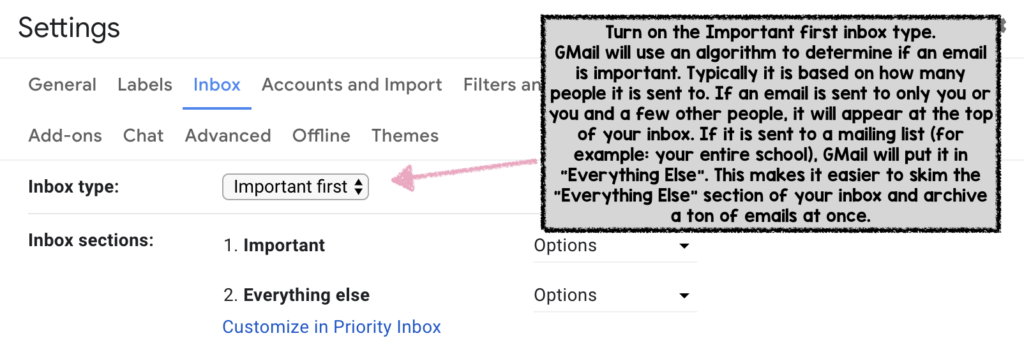
Create Filters for emails you don’t want to see in your inbox anymore
This is the MOST important tip for conquering your inbox. I used to spend hours trying to unsubscribe to emails and feeling torn because sometimes I DO need a coupon to Gap and sometimes I do have time to read emails from my favorite bloggers. Creating filters for these emails is a life saver. At work I belong to the “ALL” lists for our different schools so I also used to see every single email that was being sent out to a building (busses are in, who has ibuprofen? grades are due tomorrow, please remove lunches from the fridge). I created filters with labels for all of these lists so I can view what was sent to that building if I’m working there that day and want to know what’s going on, but I am not inundated with the emails every day.
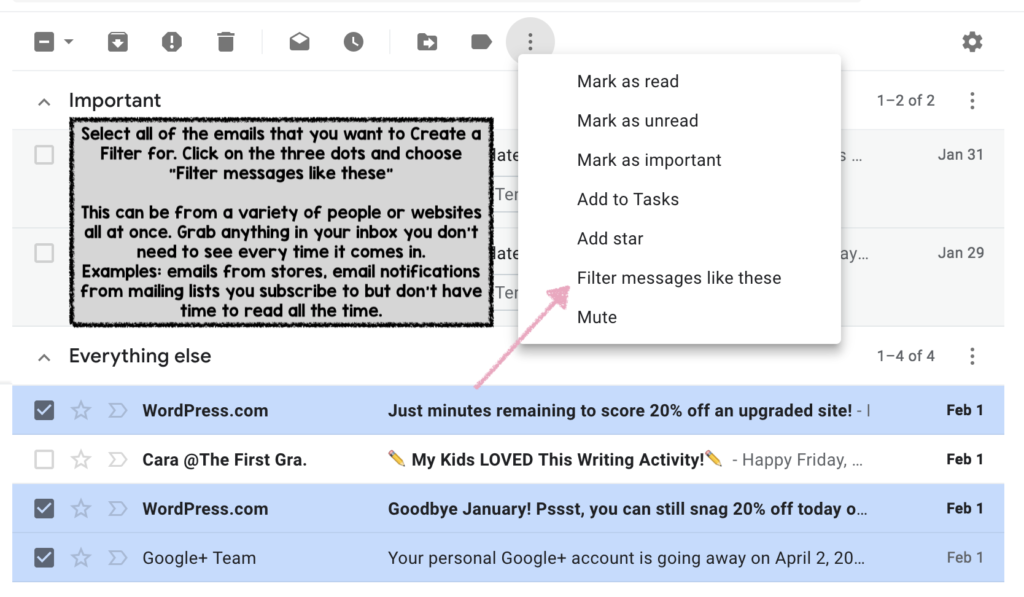
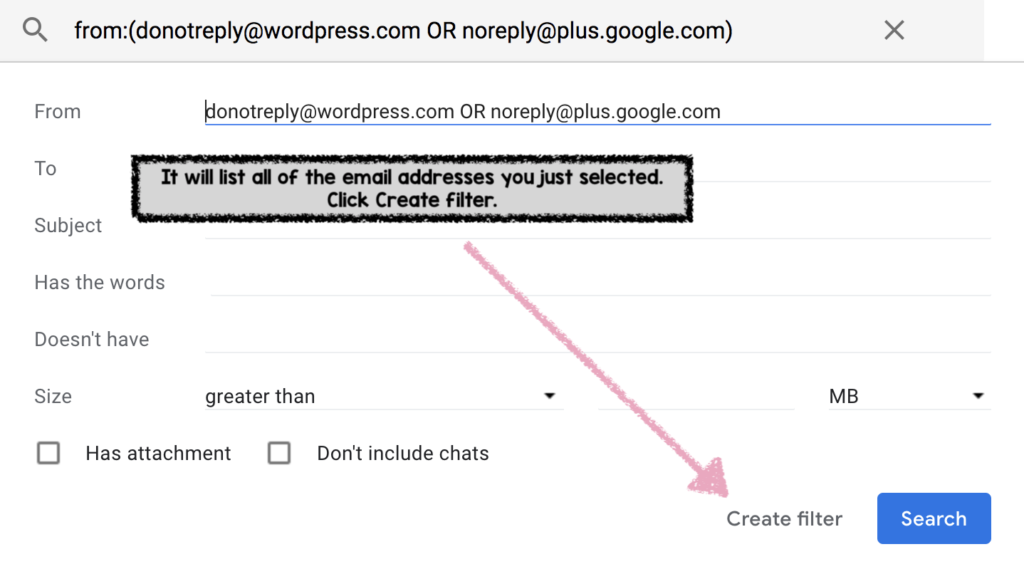
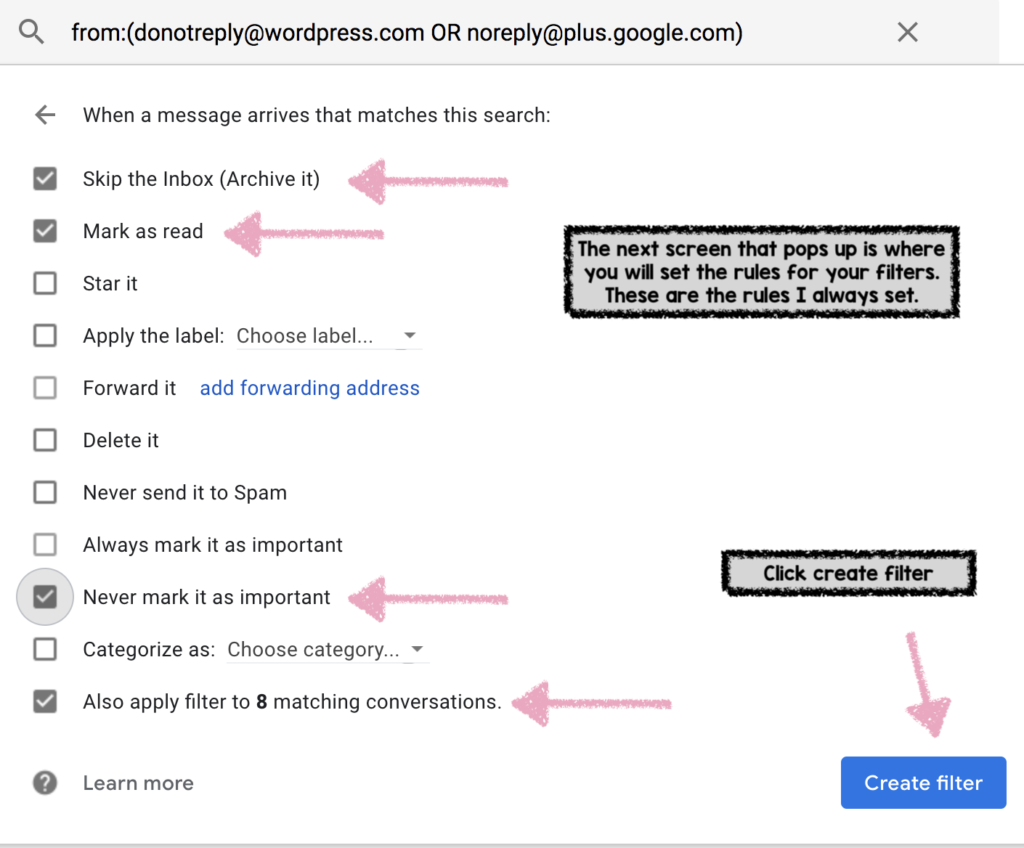
I hope this post inspires you to stop being a slave to email and start taking control of your inbox!

